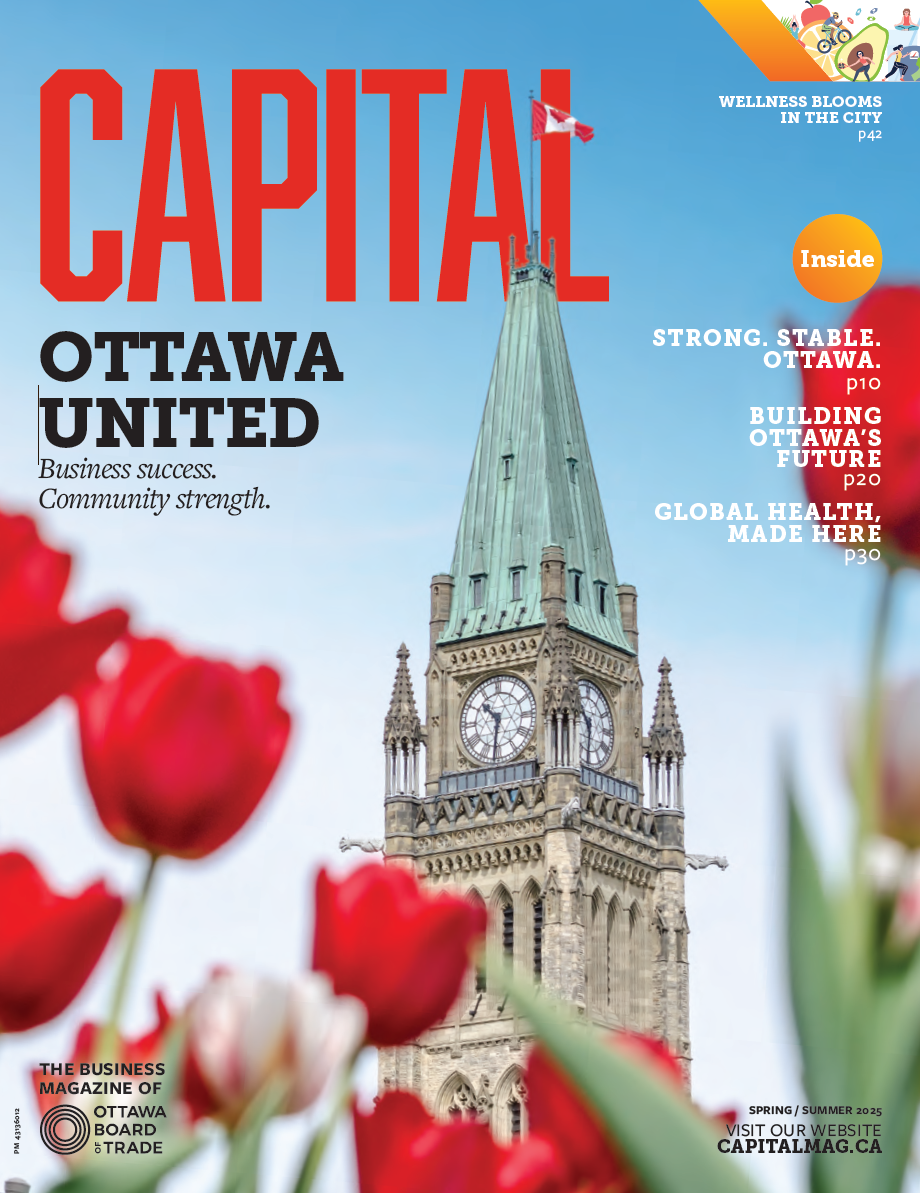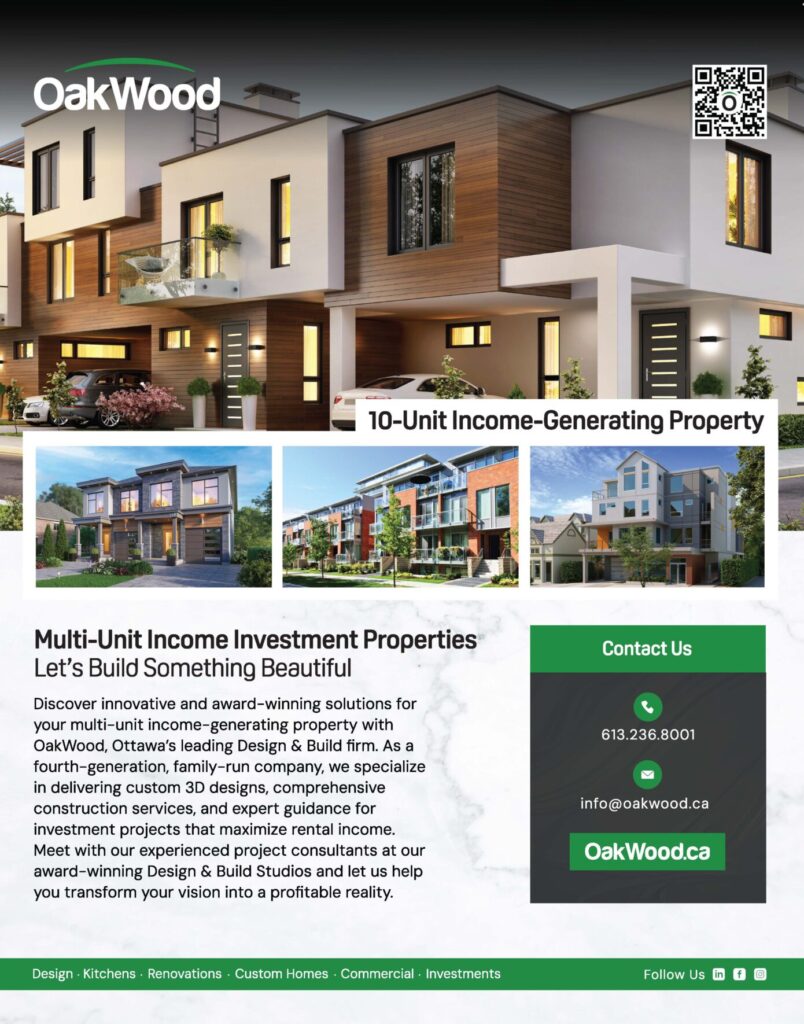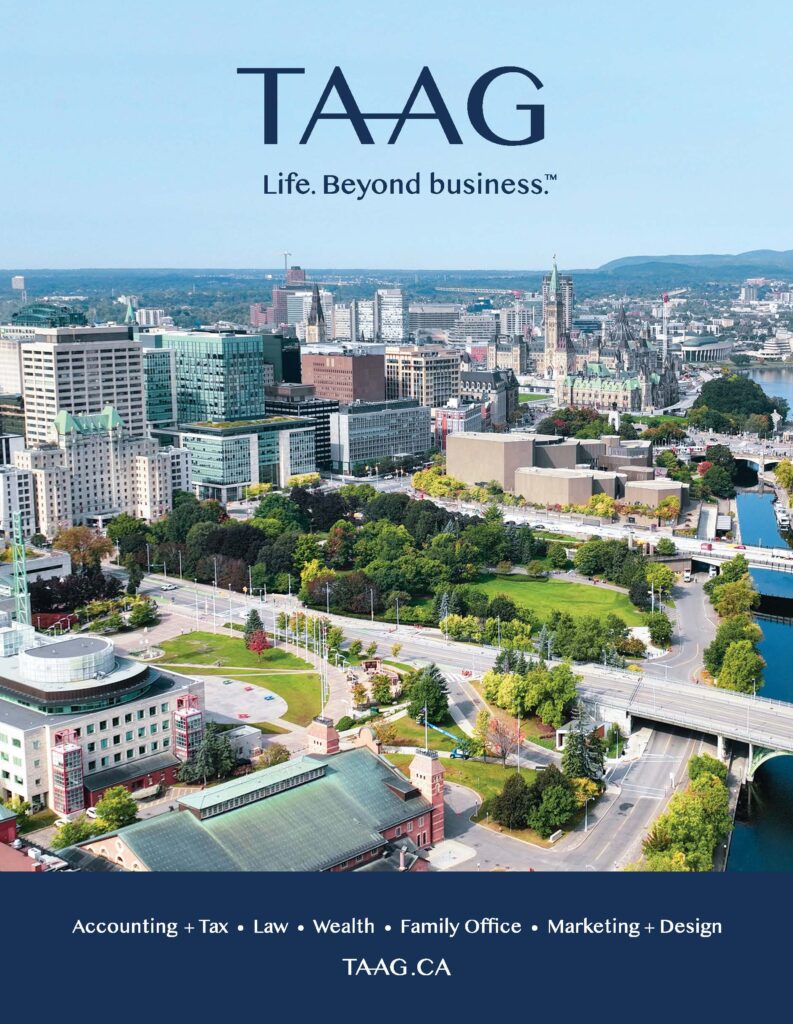Capital Potential: Harnessing local talent to be the city we aspire to be.
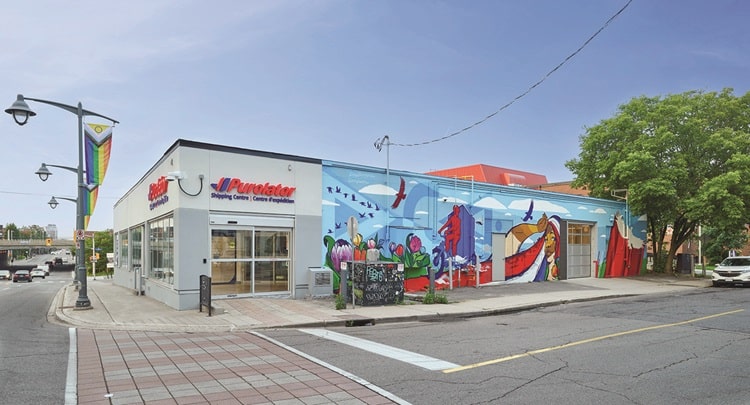
Credit Architects DCA; mural by Ininew and Anishnaabe artist, Peatr Thomas, and Haitian-Canadian graffiti artist, Jimmy Baptiste Creative adaptive reuse of an existing building to provide a last-mile hub for delivery services in Centretown
OTTAWA IS A CITY of enormous potential. We are on the cusp of being able to get so much right, to capitalize on the talents of creators and the natural beauty of our city to become the place we aspire to be.
Downtown Ottawa has, for decades, struggled under a mindset of being for office workers, desolate after hours and weekends. One-off festivals crammed into Sparks Street cannot make a vibrant, 24/7, year-round place for people. Even pre-pandemic, federal government was moving towards hybrid work environments. The City needed to be ready for this transition but missed the boat, continuing to plan transit as if an endless supply of office workers would continue to arrive, five days a week, for their 8-4 workday.
Even if that had continued, the core of our city would have continued to be a place inhospitable to the needs of people because of its lack of housing, parks, and social spaces. The City’s lack of investment in urban places, like parks, public washrooms, libraries and community centres doesn’t incentivize people to live in urban areas.
Federal government initiatives to convert surplus offices to housing are too slow. Selling off public assets is mired in a bureaucratic “market value” policy approach that assumes disposal of government assets is the same if it’s a used desk or a 40-yearold office tower. We could choose to convert these buildings to non-market housing with dollar-a-year leases and give a leg-up to cooperative housing, starting conversions in months, not years.
Recent changes to Ottawa’s Development Charges bylaw will have a negative effect on conversions and new home construction in the core. An infill apartment building located on existing streets, making use of existing sewers and services, will be saddled with tens of thousands of dollars in fees (per home) that will be used to subsidize suburban expansion. These fees, supposedly in a “growth pays for growth” model are inequitable when it comes to infill housing as no new services, roads or transit is constructed.
In 2013 planning approval delays were seen as contributing to a negative economic impact for the province, adding $20,000 per home, per month of delay. This overall impact will have only increased since the 2018 updated cost estimates. A 50-unit apartment building that complies with all rules should be approved in months. Typical delays will add six months or more to planning approval, with a total economic impact of $6 million, of which at least $2 million is construction cost alone.
Provincial changes imposed through Bill 23 More Homes Built Faster Act 2022, and others, have wreaked havoc on municipalities. While too early to tell, these provincial acts appear to be having a negative effect on housing approvals if only because staff are buried in rapidly changing legislation while managing more files with an increasingly burdensome approvals process and encroaching NIMBYism on, seemingly, every file.
As a city, we struggle with affordable housing. We have talented people and organizations who put forward ideas and solutions that are ignored for timid, uninspired solutions. Offers to create affordable housing are ignored, mired in an inequitable hiring process.
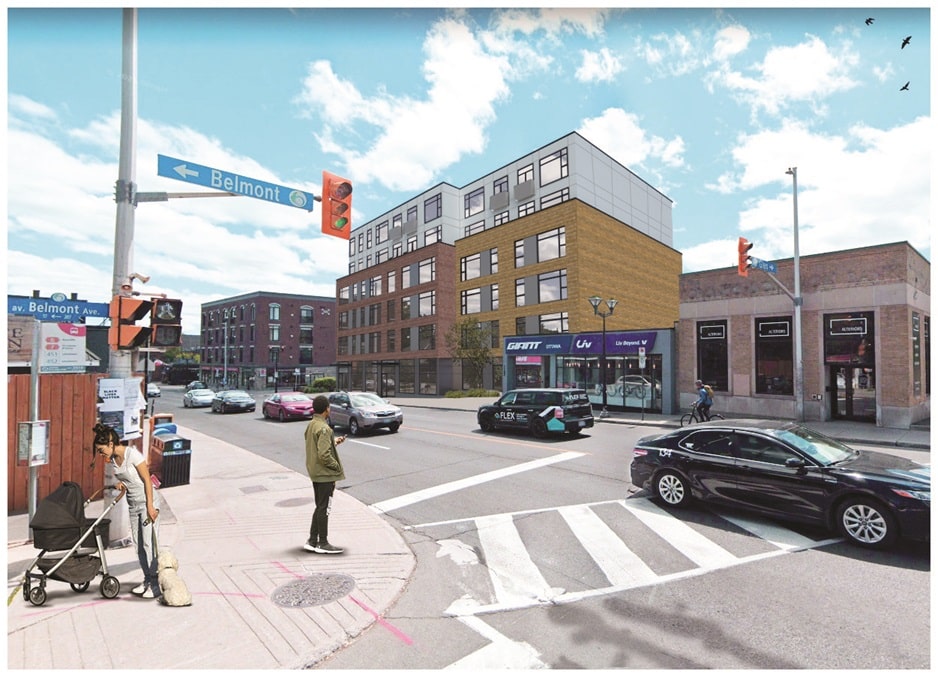
Credit Architects DCA, Developer Ambassador Realty Inc.
Six storey mass timber infill 45 unit rental apartment building in Old Ottawa
South, currently in development




